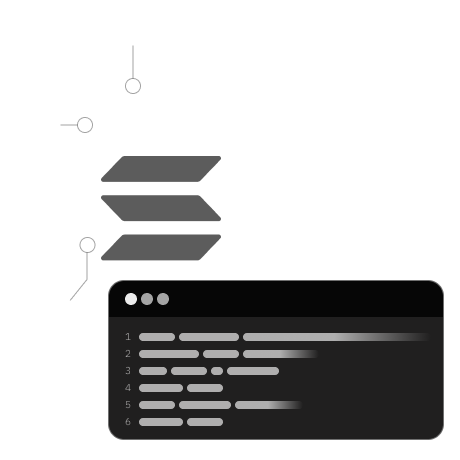
In this lesson, you'll learn:
- The role of constructors in Solidity and their significance.
Solidity uses constructors to initialize contract state variables stored in data accounts on the blockchain. These constructors, often called the 'new' function, are essential for setting up a contract before its other functions are used. They can have arguments or none, and the Solidity compiler can handle account setup automatically for contracts with a single instance.
In Solidity, each contract is connected to a data account where its state variables are stored on the blockchain. Before using other contract functions, this account needs initialization. The contract's constructor, callable via the 'new' function, serves this purpose.
For example, consider a hatchling contract with a constructor that requires a name:
contract hatchling {
string name;
constructor(string id) payable {
require(id != "", "name must be provided");
name = id;
}
}
contract adult {
function test(address id) external {
hatchling.new{ program_id: id } ("luna");
}
}
In this case, when calling hatchling from adult, the data account hatchling_dataAccount is set up as the new contract's data account.
When a constructor has no arguments, Solidity can automatically create the required AccountMeta array, but this is limited to functions with external visibility. For constructors with arguments, or in other visibility contexts, the data account must be initialized manually using the accounts call argument.
For instance, to initialize a contract, you might use the following approach:
import 'solana';
contract creator {
@mutableSigner(data_account_to_initialize)
@mutableSigner(payer)
function create_with_metas() external {
AccountMeta[3] metas = [
AccountMeta({
pubkey: tx.accounts.data_account_to_initialize.key,
is_signer: true,
is_writable: true
}),
AccountMeta({
pubkey: tx.accounts.payer.key,
is_signer: true,
is_writable: true
}),
AccountMeta({
pubkey: address"11111111111111111111111111111111",
is_writable: false,
is_signer: false
})
];
Child.new{ accounts: metas } ();
Child.use_metas{ accounts: [] } ();
}
}
@program_id("Chi1d5XD6nTAp2EyaNGqMxZzUjh6NvhXRxbGHP3D1RaT")
contract Child {
@payer(payer)
constructor() {
print("In child constructor");
}
function use_metas() pure public {
print("I am using metas");
}
}
In this example, the data account must be the first element in the AccountMeta array, and the system account '11111111111111111111111111111111' must be included. The is_signer and is_writable flags in AccountMeta must be set correctly.
Remember, the order of accounts in the AccountMeta array is crucial and should follow the IDL ordering.
Next, we'll explore functions in Solidity, furthering your understanding of Solidity programming for Solana.